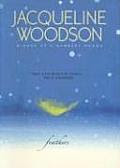Over the past several weeks, I have found myself doing a lot of reflection trying to get this online teaching right. I keep meaning to get my thoughts on paper but then get caught up in the day-to-day work of teaching in this pandemic era. I know if I can catch my breath, there is a lot to learn and reflect on during this time. So, I decided that every day in May, I will share my thoughts on Teaching and Learning. This is Day 10.
As we go into our last full week of school/remote learning, I am thinking about Summer Reading. In the classroom, I always dedicate a lot of time these last few weeks helping students create a summer reading list. And I always do the same. We preview books, we share titles, we read reviews, we visit websites, we take recommendations from others.
For the past several summers I've participated in Donalyn's summer #bookaday and I spend time counting the days and thinking about books I'll start with. Summer is always a great time for me to catch up on so much reading and I make it a priority.
But I am finding that I am not reading as much these days. When this stay-at-home started, I figured I'd read a book a day. I have plenty of books at home and plenty of time. But I've really been struggling with reading. I've managed about a book a week most weeks but those are mostly read in spurts.
When I talked to my students about their reading, I am finding similar things. They are missing reading as much as they did, but they are not able to read as much. And without being in school--having access to our classroom library, the school library and our amazing public libraries, they are a little lost.
We've spent some time over the last few weeks talking about this-how and what are we reading during this time. And I've noticed that for so many of my students, reading habits are changing. Some students aren't making the time for reading and are in a reading slump. But others are discovering new things. Students who would never reread a book are now rereading books they have at home. Books they love. Students who were adamantly opposed to eBooks have given them a second chance and realized that checking out and reading an eBook from the library is better than not having new books to read at all. My own 20-year old daughter has discovered audiobooks during this time at home.
I'm wondering about these reading habits--which ones are just getting us through this crisis and which ones will stick. And I'm wondering how best to help my 5th graders think about summer reading during our last week together. I'll still share some books and some sites for finding new books, but I think much of our talk will be around our habits and how we might have to build new reading habits during this time.
As I think about summer #bookaday, something I've been committed to for years, I wonder how that might work this year. Typically, I pick up a stack of books each week from the local library, but this year, that is not possible. So, I am rethinking what "counts" as reading. We are so lucky to have hundreds of authors reading their books aloud online. Does watching a video of that "count" toward my bookaday? And I've never reserved picture book eBooks from the library--is that even a possibility? If so, I need to learn how to do that. And I wonder how I might build audiobooks into my life with so little driving (I typically listen to audiobooks on the drive to work but am wondering how I build those into my life at home.)
This week, when we talk about summer reading, I want my students to think about options. Temporary options--through this crisis. know my summer reading life may not look like it has in the past and I have to assume theirs won't either. And I don't know what it will look like--if libraries will open, if I can learn to love eBooks, if I will stick with summer #bookaday. I know as readers, many of us are talking about our changed reading habits during this time. As adult readers, we know that we are still readers, and that we'll get our "normal" reading lives back. I want my students to know that too,
So, I think this year, as we prepare for summer reading, I'll continue to talk to kids honestly about their changing habits and the reading challenges so many of us are facing during this pandemic. I'll throw out some resources and hopefully help them expand on the possibilities. Rather than creating a summer reading list, maybe we'll talk about building in some new habits as readers --or at least building in the habit of trying new things as readers as we navigate this pandemic.
































